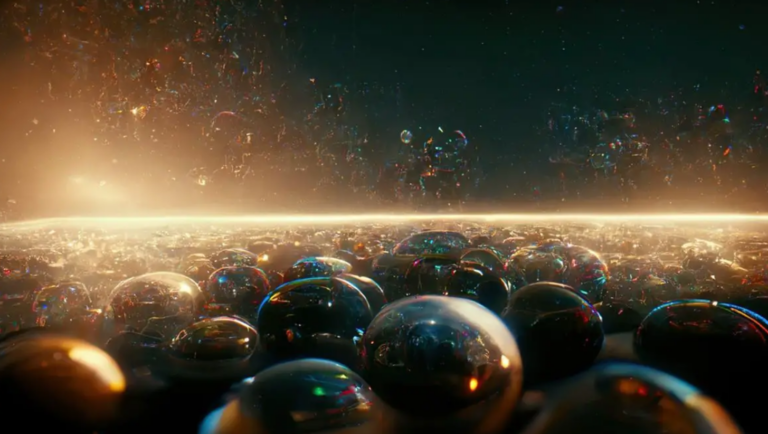The universe could potentially experience accelerated expansion as a result of merging with smaller ‘baby universes’.
The universe is expanding faster and faster, but not all scientists agree that dark energy is the cause. Perhaps, instead, our universe keeps colliding with and absorbing smaller ‘baby universes,’ a new theoretical study suggests.
According to all the theories concerning cosmology, everybody agrees that expansion of the universe is a continuous acceleration process. But sadly, none of these theories can adequately explain this phenomenon. A captivating explanation has emerged from a recent theoretical study: One wonders if this is the reason why our universe is expanding and is in the process of adding ‘infant’ parallel universes to itself.
Astronomy research for the cosmic microwave background which is formed by the residual of big bang indicates that the universe is expanding at an accelerating rate. For this discovery to fit with the conventional history for the universe that is the Standard Cosmological Model, scientists suggest that the expansion is caused by an unidentified substance called the dark energy.
However, as this mysterious form of energy does not present itself in any other format other than driving the universe’s expansion, a number of astrophysicists are now beginning to doubt the reality of this energy source and seek for other explanations of the phenomenon. In a paper published in JCAP, scientists projected that what may be fueling the expansion of the universe is the merging with other universes.
“The main finding of our work is that the accelerated expansion of our universe, caused by the mysterious dark energy, might have a simple intuitive explanation, the merging with so-called baby universes, and that a model for this might fit the data better than the standard cosmological model,” lead study author Jan Ambjørn, a physicist at the Copenhagen University told LiveScience in an email.
Taking in cosmic “babies”
It is quite possible that any given universe has many universes interacting with it and this has been the subject of theoretical speculation for some time. However, this work goes further a step by providing a mathematical model as a representation of some of the interaction processes that may be at play as we shape our world. From their estimates the authors have drawn a conclusion that the expansion of our universe would be a result of the merging of universes and it might be detected by our sensors as the expansion of the universe.
Apart from exploring the results of the universe merging, the scientists managed to calculate further the rate of expansion of the universe with the help of their hypothesis. Mysteriously, their results turn out to be in closer conformity with the observation record of the universe than the standard cosmological model.
In addition, the authors’ hypothesis also tackles another thought-provoking issue, which is the inflationary scenario in context to the early stages of the universe expansion. Although earlier theories tend to provide the credit for the expansion to the existence of the “inflaton” field, which helped to achieve this ultra-rapid growth rate after the time of Big Bang, the authors of the study have a different perspective. Some of them propose that this early expansion was triggered by the engulfing of our youthful universe by a larger one.
The authors of the study write that becoming increases at an exponential rate in a small amount of time and this has led to the postulation that our universe may have collided with a larger universe and presumably been absorbed by it. While it remains unclear how exactly this absorption process occurs the above described scenario definitely has its merits. It cancels the necessity of having the inflaton field, which was believed earlier to be responsible for the inflation. Whether or not this situation can serve to answer all the issues that inflation was originally intended to solve is still an open question but from this perspective one can gain a clearer picture of the nature of the cosmic expansionary phase.

Other ideas which have been forwarded by the scientists include the proposition that out recently expanded universe merged with other ‘baby universes’ once it devoured them. This theory presented by the authors has implications and possible solutions that can address some of the cosmological problems experienced today but still remain open to empirical analysis. Further ongoing experiments pertained to investigating the properties of the microwave background might offer solution to these universal questions soon.
According to the physicist of Tokyo Institute of Technology Yoshiyuki Watabiki, it is assumed that data received from the telescopes of Euclid and James Webb will help to identify which of the modes accurately describe the current expansion of the Universe, but the observed acceleration in the later stages does not coincide with the standards of conventional cosmological models.
Do not forget to share your opinion with us to provide you with the best posts !




0 Comments